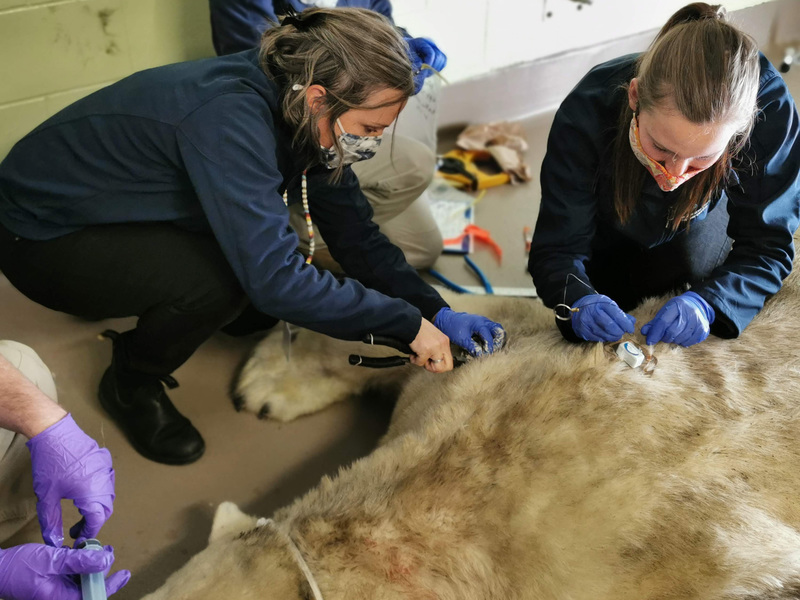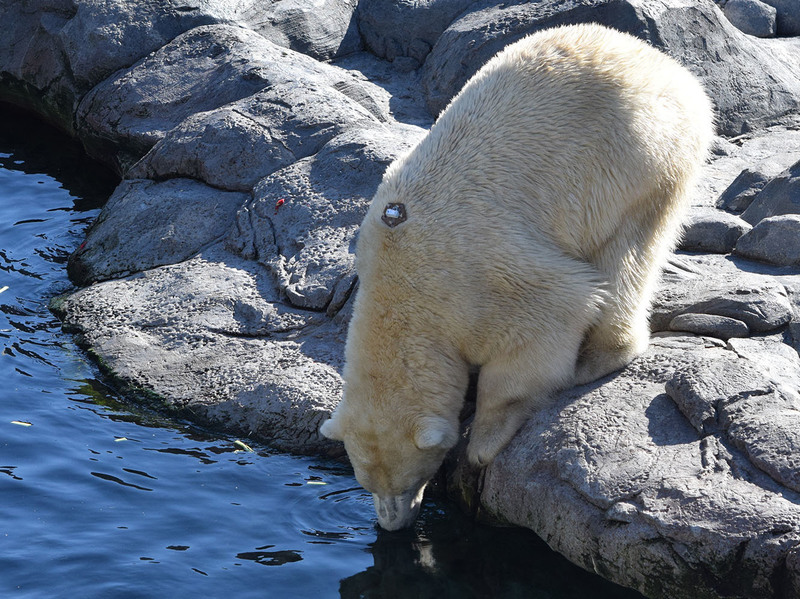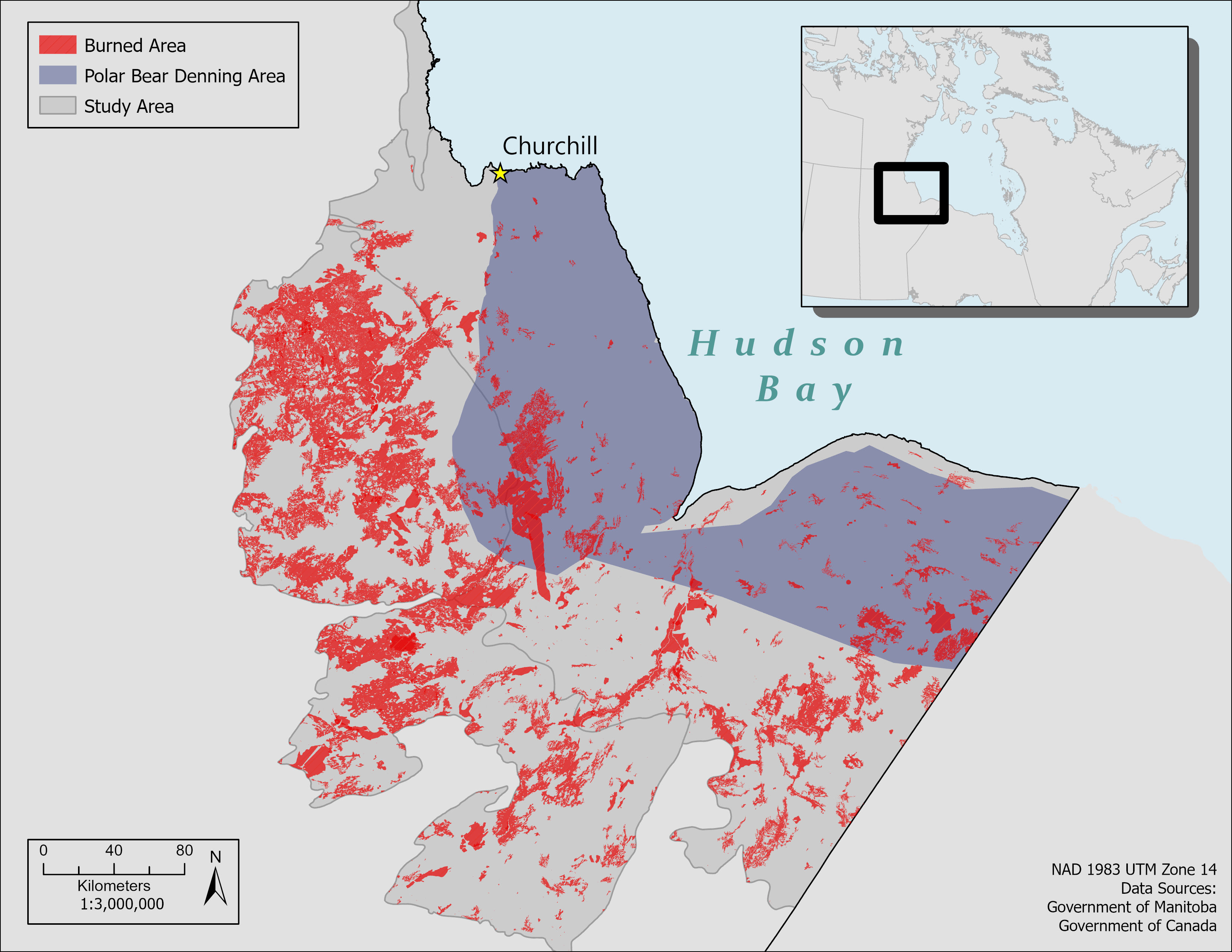Here at the Zoo, our Conservation & Research team is dedicated to learning from the polar bears in our care and assisting with conservation efforts in the wild.
The polar bears in our care participate in research led by our staff or by scientists from around the world. This research covers a wide range of topics and changes over time; here are some current projects.

Research and Conservation Specialist, Adam, takes photos of the bear's face to study the whisker pattern
Non-Invasive Techniques to Identify and Track Bears
Our bears help researchers test non-invasive techniques to identify and track bears in the wild. We’re working with Manitoba students to study how polar bear whiskerprints change over a lifetime which could help researchers identify wild polar bears without capturing and handling them. We’ve also collaborated with Polar Bears International to test minimally invasive tracking devices that attach to bear fur. This helps develop trackers that will work best when they are used in the field.

Conservation staff attach a tag prototype to a polar bear under anesthesia

Baffin, with a tag prototype attached to his back, in the Journey to Churchill habitat at Assiniboine Park Zoo
Thermal Imagery to See Energy Expenditure
On the Hudson Bay coast near Churchill, a familiar fall sight is polar bears sparring or play fighting. This activity looks like it takes a lot of energy, but it happens when polar bears have been fasting for several months and should be conserving their energy. So why do they do it? We used thermal imagery to non-invasively measure changes in polar bears’ body temperature that occur while polar bears are engaged in social play.
Our results show that bears are spending energy while sparring, which suggests it is a very important behaviour, but we still don’t know the true purpose. It could be practice for the upcoming mating season or establishing a hierarchy to be able to avoid fights in the future.
Read the paper here.
Polar Bear Denning Study
Our conservation scientists have compiled existing knowledge of polar bear denning areas into an accessible, comprehensive map that covers all of Canada. This can be used by land managers and northern communities to help make decisions about their land and identify critical habitat for polar bears.
Read the paper here.
We have continued this work to look at denning habitat in Manitoba and where these important areas might be at risk of burning in a wildfire. This research has been funded by the Canadian Polar Bear Habitat fund.

A map provided by our Conservation and Research team showing the polar bear denning areas and burned areas from wildfires
The Zoo’s Conservation & Research team is excited to be involved in valuable research projects that expand our collective knowledge and understanding of these amazing animals!
When you visit the Zoo and connect with our polar bears, we hope you’re inspired to join us to help polar bears in whatever way you can! This includes taking action to lower your carbon footprint and learning more about how you can protect Arctic species.





